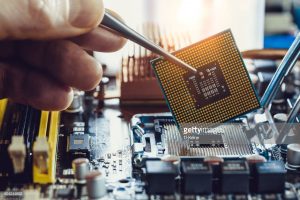
How to protect your product design against component shortages
By Graham Scott, senior director of global commodity management, Jabil Inc.
Electronics Engineering Supply Chain IoT IoT shortages shortages supply supply supply Chain supply chainWhile recent headlines crow about the steady approach of autonomous and electric vehicles, the Internet of Things (IoT) and the latest smart phone, a different, markedly darker story has been unfolding at the other end of the supply chain for over a year. Companies that manage the electronic components have confronted successive waves of supply shortages, price hikes and lengthening lead times. Worse, it is difficult to predict when this will change.

Technology headlines aside, electronics companies and integrators are navigating a market caught in a perfect storm between supply and demand. On the demand side, there is a shortage of materials and parts – especially for legacy components within commodities such as multilayer ceramic capacitors (MLCC), resistors, transistors, diodes, and even memory. Suppliers are shifting capacity away from these legacy components to pursue the opportunities afforded by more profitable, headline technologies.
In short, capacity is constrained and demand for standard electronic components continues to grow as more evolved products are needed to make once conventional products smart, and smart products even more functional. Many suppliers continue to quote lead times between six to 12 months at best.
Market by Market
Compared to the automotive and smart phone market, the IoT represents a comparatively small ripple in demand for electronic components today. But the tide is rapidly rising according to Gartner, who predicts this market will grow by more than 100 percent to encompass over 20 billion IoT devices within just two years as sensors and connectivity are added to household appliances, packaging, medical devices, industrial equipment and pretty much any other analog product.
This trend overlaps somewhat with the automotive industry as vehicles become more autonomous and connected. Though even without the confluence of the IoT and transportation, other automotive trends would still be fueling higher demand for electronic components. Cars driven by conventional combustion engines today integrate somewhere between 2,000 to 3,000 capacitors. However, these cars are increasingly sharing the road with electric vehicles that may have up to 22,000 MLCCs onboard. This number will continue to grow as more cars and automotive functions become electrified.
This increases demand for all electronics. But the higher price-points for advanced automotive components and the relative stability of that market makes it an attractive target for passive suppliers to focus their capacity there.
While the IoT and automotive markets both dangle tremendous new opportunities for suppliers, smart phone manufacturers remain the most significant source of demand for passive components and memory products. The math is simple: Approximately 1.5 billion smart phones are manufactured per year, with flagship models containing roughly 1,000 capacitors each. Multiply those two figures together and you will approximate half the total global output for MLCCs, which is estimated to be roughly three trillion pieces per year. Nor will demand from smart phone manufacturers fade any time soon. Each new model integrates more components to keep up with consumer demands for functionality and speed.
While all of these trends spell exciting new products for consumers, they signal higher risk for suppliers that continue to produce mature, less-profitable passive components. That risk extends to OEMs down the supply chain who are slow to transition to updated components.
Why? Because any recovery in supply over the next five years will likely take root first with electronics products that represent the most attractive investments to suppliers – namely, those supporting the latest and greatest technologies. Relief may come as soon as late 2019 for these technologies.
Surviving a Component Supply Shortage as an OEM
It is not enough, however, to simply seek shelter and wait for the storm to pass. OEMs who take early action will likely see the earliest signs of recovery. Those who wait may not recover even after supply has fully restored.
There are several actions companies should consider to prepare the way for success:
- Continually evolve their product design to keep pace with suppliers’ technology and production roadmaps
- Continue to grow new alternative suppliers
- Minimize reliance on single-sourced parts
- Increase collaboration and visibility between product design, procurement and supply chain organizations
This last point cannot be understated. Maintaining strong supplier relationships is key as suppliers impose allocation measures. Constant contact with suppliers is critical in such circumstances to ensure you receive components for the product you need versus the product the supplier wants to support. Further, the vital importance of these relationships only increases as stability returns to the supply side, as the most effective time to build them is during a buyer’s market.
